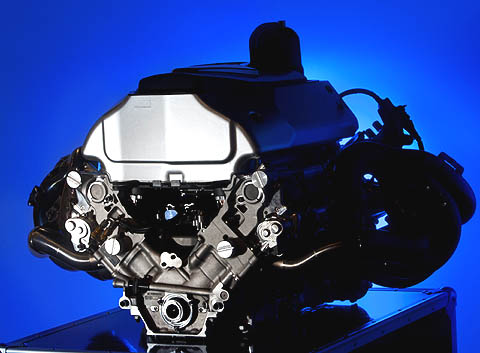


14/03/2013
NEWS STORY
 |
This weekend's Grand Prix will be the final time Albert Park reverberates to the sound of V8 Formula 1 engines. Used since 2006, the V8 will have been in service for eight years by the end of the 2013 season.
Renault Sport F1 deputy managing director, Rob White, discusses the life of the V8, its evolutions and its potential performance, engine freeze notwithstanding.
What have been the key evolutions of the V8 since 2006?
The easy thought is to say that there can be no evolutions during an engine freeze! However there have still been several notable changes in the use and requirements for engines in the V8 era. In fact, almost every year there has been a change. The first, for 2007, was homologation or freeze of the major parts and introduction of a rev limit. Then for 2008, the homologation perimeter was extended, the rev limit was reduced from 19,000rpm to 18,000rpm and the limit of 8 engines per driver per season introduced. More recently, we have also had successive clarifications on engine mapping and usage. With F1 being what it is, the challenge has been to produce the best car performance under each new set of constraints.
In parallel, we have had to adapt to a much more complicated engine lifecycle. In previous times, it was possible to fit engines at will: you could fit a new engine for a race and then replace for the next round. This meant you could push it to the absolute limits without taking account of any future usage. The limit of eight engines per season, means some engines must be used for three races. We have therefore learned a lot about increasing engine and component life, without any major technology change or performance penalty. As a result engines can now run for up to 2,500km without any significant power drop off. In the past engine life was just over 350km, so we are running to more than seven times the distance of ten years ago.
Without the engine freeze and limit on rpm, what would these engines be capable of?
Without the rev limit we would have continued to pursue greater rpm until we became limited by the physics of the combustion process and diminishing returns due to increased friction with increasing rotational speed. Without any other new regulatory constraint, I imagine we would have reached over 22,000 rpm by now and would have found a further 75 horsepower (ie +10%), equivalent to a lap time gain of around 1.5 sec at Monza.
Without doing the development work, it is difficult to judge the level at which engine performance would have converged at the limit of the technical regulations. The same effects that have been pursued in the frozen era (exhausts, mapping etc) would have been of interest, but the priorities may have been different.
How different are the engines fielded by different manufacturers now?
Many people assume that the engines are similar since the specification has been frozen, however they are all very different as the specifications were frozen at a point in time where the V8 was relatively immature. The technical regulations are strict and there are some common characteristics including the bore size and rpm limit, but there are many thousands of design decisions that are not fixed in the regulations. Perhaps it is not obvious but, in an unfrozen environment there is more opportunity to converge on common solutions between engine suppliers. The engine contribution to car performance is just as important now under a frozen set of rules; even if frozen in performance, the impact on the car remains as important as it ever has been.
What have been the most difficult parts to optimize, or maintain, in the current V8s?
There are no easy subjects in a Formula One engine. All of the systems and parts require a great deal of attention, care and maintenance. However the most difficult parts to maintain are the perennial stressed parts such as the pistons, connecting rods and bearings that the power travels through. For example the pistons are stressed to more than 8,000 times the force of gravity. The actual weight of a piston is only 250g but when the engine revs to its maximum limit of 18,000rpm (that's 300 revs per second!) the acceleration exerts a force of 2 tonnes on the piston and conrod.
There must now be some pretty impressive statistics for the engine…
The engine can produce over 750bhp and top speed is over 330kph - not far off the cruising speed of a light private aircraft. Acceleration from 0 - 60kph can be done in 1.6 seconds, approximately the same as an F16 fighter plane. It can do 0 to 100 km/h (62 mph) in 2.5 seconds, 0 to 200 km/h (124 mph) in 5.1 seconds and 0 to 300 km/h (186 mph) in 12.0 seconds, dependent on aerodynamic setup and gearing. This is notwithstanding a weight of just 95kg, less than the weight of a slightly overweight man. The heat produced by the engine is also such that the exhausts of the RS27 will reach up to 1,000°C. To give you an idea of this unimaginable temperature, volcanic lava is between 700°C and 1,200°C!